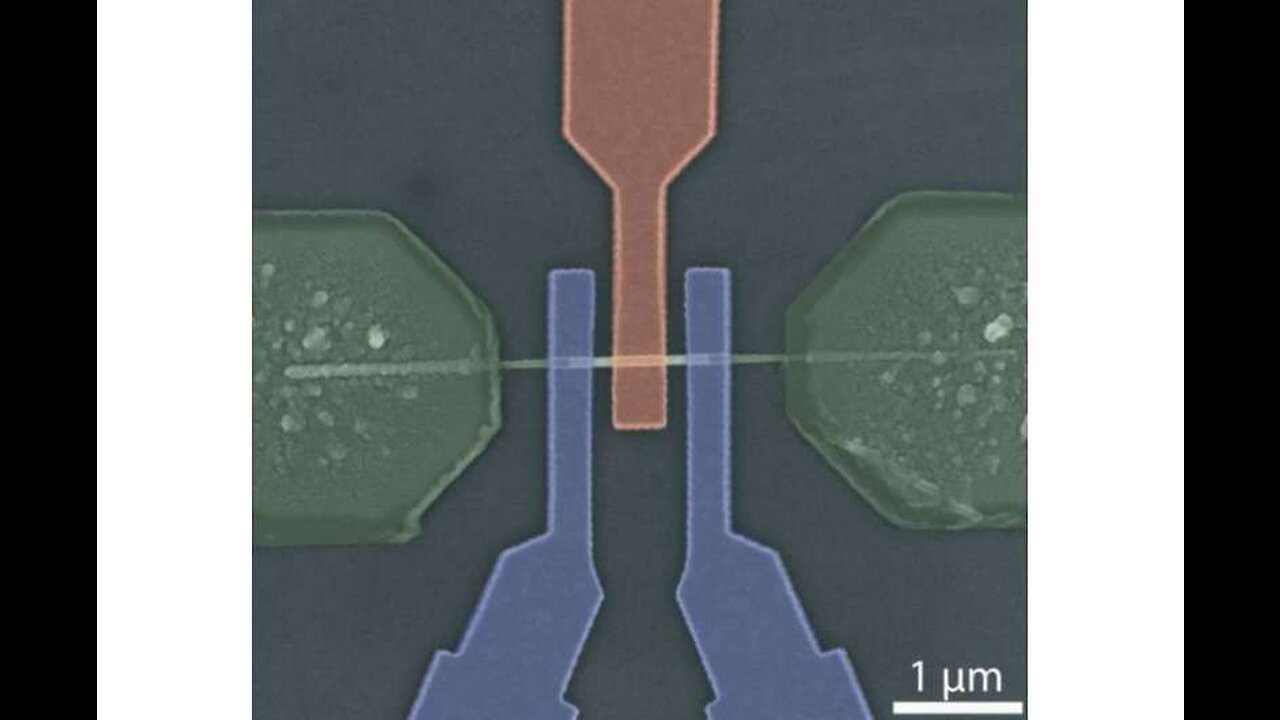Premium Only Content

New skyrmion transistors propel quantum and AI research - Phys.org
🥇 Bonuses, Promotions, and the Best Online Casino Reviews you can trust: https://bit.ly/BigFunCasinoGame
New skyrmion transistors propel quantum and AI research - Phys.org
Operation of a skyrmion transistor. a) Skyrmion transistor device geometry. The blue dashed box is a skyrmion channel. The red dashed box acts as a skyrmion generator and the green dashed box is a skyrmion gate. Scale bar, 10 µm. b) From the initial state; c) a skyrmion is generated; and d–f) the skyrmion moves and passes through the skyrmion gate region. g–k) After lowering PMA in the skyrmion gate region by applying a positive gate voltage pulse, k) the generated skyrmion is blocked at the right interface of the skyrmion gate region. l–p) After returning PMA in the skyrmion gate region by applying a negative gate voltage pulse, p) a skyrmion can pass the skyrmion gate region again. Credit: Korea Research Institute of Standards and Science (KRISS) In an era marked by an escalating energy crisis, the world stands on the precipice of a transformative revolution in spintronics technology, promising ultra-low power consumption paired with superior performance. To illustrate the potential, consider this: the power consumed by AlphaGo during its famous Go game in 2016 equaled the daily power use of 100 households. By 2021, Tesla's autonomous driving AI required over ten times that amount of power for learning. In response to this growing demand, the Korea Research Institute of Standards and Science (KRISS) has pioneered the world's first transistor capable of controlling skyrmions. This breakthrough paves the way for the development of next-generation ultra-low-power devices and is anticipated to make significant contributions to quantum and AI research. The findings are published in the journal Advanced Materials. Skyrmions, arranged in a vortex-like spin structure, are unique because they can be miniaturized to several nanometers, making them movable with exceptionally low power. This characteristic positions them as a crucial element in the evolution of spintronics applications. The explosive growth of electronic engineering in the 21st century can be traced back to the 1947 invention of the transistor at Bell Laboratories in the United States. Acting as an amplifier and switch for electrical currents, the transistor has been pivotal in the field of electronic engineering. The discovery of the skyrmion in 2009 sparked widespread research into a skyrmion-based transistor, but the absence of essential technology to control skyrmion movement thwarted these efforts. This bottleneck has been overcome with KRISS's newly developed skyrmion transistor, which leverages proprietary technology to electronically manage the movement of skyrmions created in magnetic materials. This innovative solution enables the precise control of skyrmion flow or halting, akin to how conventional transistors modulate electric current. A critical aspect of managing magnetic skyrmion movement lies in controlling magnetic anisotropy, which influences the energy of skyrmions. Previous research endeavored to regulate magnetic anisotropy through oxygen movement within devices but failed to achieve uniform control. Overcoming this challenge, the KRISS Quantum Spin Team developed a groundbreaking method for uniform control of magnetic anisotropy by leveraging hydrogen within aluminum oxide insulators, marking a world-first in the experimental implementation of skyrmion transistors. This milestone represents yet another foundational technology for spintronic devices, following the institute's 2021 achievement in the generation, deletion, and movement of skyrmions. The advent of the spintronics transistor is set to expedite the development of spintronics-based devices, such as neuromorphic and logic devices, which offer substantial advantages in power consumption, stability, and speed over traditional electronic devices. Dr. Chan Yong Hwang, a director of the KRISS Quantum Technology Institute, says, "Major Korean companies are pivoting their focus to next-generation semiconductors that utilize spintronics to transcend the constraints of current silicon semiconductors. We plan to advance spintronics-related technology further and incorporate them into next-generation semiconductor devices and quantum technology." Reflecting on the significance of the achievement, Dr. Seungmo Yang, a senior researcher at KRISS, says, "The transistor ignited the digital revolution of the 20th century....
-
 39:37
39:37
BonginoReport
5 hours agoCrybaby Crenshaw’s Latest Meltdown (Ep.147) - 02/25/2025
86.1K232 -
 LIVE
LIVE
Wendy Bell Radio
6 hours agoThe Party's Over
10,704 watching -
 45:46
45:46
Randi Hipper
1 hour agoBitcoin CRASHES to 3 month low! Crypto investors BEWARE
6.48K1 -
 LIVE
LIVE
Conspiracy Pilled
12 hours agoAvowed
113 watching -
 5:31
5:31
Adam Does Movies
1 day ago $3.00 earnedThe Monkey Movie Review - This Is From The Longlegs Director?
32.9K3 -
 14:47
14:47
Tactical Considerations
16 hours ago $3.99 earnedClassic Precision Woox Furiosa Bergara Premier 6.5 CREED
36.4K1 -
 40:44
40:44
Rethinking the Dollar
1 day agoDonald & Elon Head to Fort Knox—What Are They Planning?
25.6K24 -
 1:10:15
1:10:15
MTNTOUGH Fitness Lab
1 day ago"My Baseball Career Wasn't Enough": Adam LaRoche's Life-Changing Anti-Trafficking M
20.8K4 -
 1:00:12
1:00:12
The Tom Renz Show
20 hours agoComing to America & Coming to Christ
48.8K7 -
 1:12:21
1:12:21
TheRyanMcMillanShow
1 day ago $0.58 earnedDebbie Lee: Mother of First Navy Seal Killed In Iraq, Marc Lee - RMS 019
22.2K1